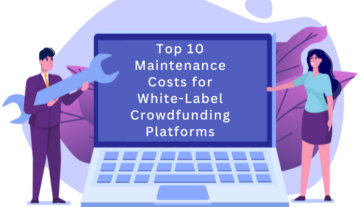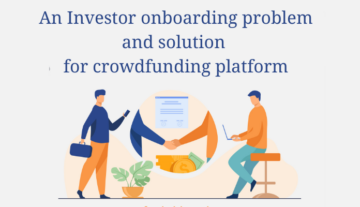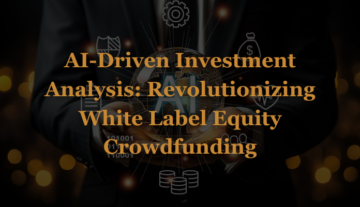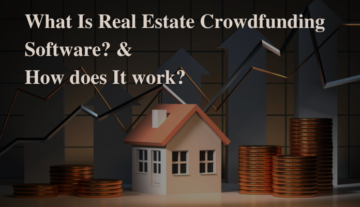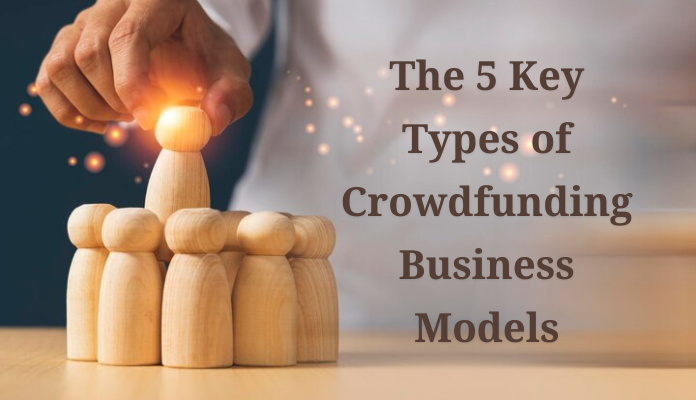
Crowdfunding has emerged as a popular funding method for entrepreneurs and startups over the last decade. By reaching out to a large pool of investors or donors via online platforms, entrepreneurs can raise money for their ventures without traditional financiers like banks and venture capitalists.
However, not all crowdfunding campaigns work the same way. There are a few main types of crowdfunding business models to be aware of:
- Donation-Based Crowdfunding
- Rewards-Based Crowdfunding
- Equity-Based Crowdfunding
- Real Estate Crowdfunding
- Peer-to-Peer Lending
Understanding the differences between these models is key for entrepreneurs considering a crowdfunding campaign. Each has its own pros, cons, and legal considerations.
1 Donation-Based Crowdfunding
The donation-based model is the original crowdfunding approach started by platforms like GoFundMe. As the name suggests, people contribute funds to campaigns out of goodwill rather than getting anything tangible in return.
Common types of donation-based campaigns include:
- Personal causes – Medical expenses, memorial funds, disaster relief, etc.
- Nonprofit and charity initiatives
- Creative projects – Films, books, albums, exhibits
Pros:
- Contributions are treated as gifts rather than income for tax purposes
- Allows fundraising even if you can’t provide rewards or equity
- Builds awareness for a cause or project
Cons:
- Difficult to spur viral excitement without rewards
- Harder to attract large donations from strangers
Top platforms: GoFundMe, Fundly, CrowdRise, Generosity
Considerations: Position your campaign around an emotional, compelling or inspiring cause that taps into people’s social consciousness rather than their incentive to gain something in return. Share widely across your personal and professional networks to attract donors.
2 Rewards-Based Crowdfunding
Rewards-based crowdfunding is likely the model most recognizable to the general public thanks to mainstream platforms like Kickstarter and Indiegogo.
Campaign backers pledge money to projects and ventures in exchange for non-financial rewards, perks or products. This allows people to pre-order or support innovative ideas and products before they hit the mass market.
Common campaign categories include:
- Technology products – Smart devices, smartwatches, 3D printers
- Creative works – Films, video games, books, albums
- Consumer goods – Apparel, food products, household items
- Events – Concerts, conferences, movie screenings
Pros:
- Allows pre-selling and validation of products or ideas
- Backers motivated by rewards rather than pure altruism
- Creators retain full ownership and control
Cons:
- Requires fulfillment operation to deliver rewards
- Delayed cash flow until after campaign closes
- Risk of failure to meet delivery timeline or rewards promises
Top platforms: Kickstarter, Indiegogo, Crowdfunder
Considerations: Ensure you can deliver on the rewards promised at the funding levels offered. Budget properly for fulfillment costs. Build excitement with a tempting range of rewards.
3 Equity-Based Crowdfunding
Equity crowdfunding allows backers to take an ownership stake in startups and private companies in exchange for their pledged funds. This gives small investors access similar to angel investors and venture capitalists to buy a piece of an emerging business.
Common company stages funded via equity crowdfunding:
- Early-stage startups
- Private growing companies looking to expand
- Ventures aiming for an eventual IPO or acquisition
Pros:
- Attracts sophisticated investors driven by potential returns
- Funds don’t need to be repaid like debt financing
- Allows founders to retain control compared to VC funding
Cons:
- Complex legal requirements around investor rights
- Gives away chunks of company ownership
- Investors may expect strong returns or influence strategy
Top platforms: WeFunder, Republic, SeedInvest, MicroVentures
Considerations: Must structure shares properly to avoid security violations. Prepare thorough investor documents on strategy, risks, and financial projections. Be conservative on valuation and dilution.
4 Real Estate Crowdfunding
Real estate crowdfunding applies the crowdfunding model for investors to fund real estate deals. Investors can contribute to purchases, renovations or developments and receive income and appreciation based on the performance.
Typical funded assets include:
- Rental properties like multi-family apartments
- Commercial buildings – Office spaces, retail centers
- Real estate developments – Home renovations, new constructions
Pros:
- Gain access to lucrative real estate markets with much lower buy-in
- Investors enjoy passive income from property cash flows
- Low-correlation to stock markets and bonds
Cons:
- Illiquid long-term investments (often 5+ years)
- Property deals can be higher risk than stocks
- Need substantial assets to mitigate investor risk
Top platforms: Fundrise, RealtyMogul, CrowdStreet, RealCrowd
Considerations: Vet sponsor operators thoroughly – management capabilities are crucial. Understand time horizons, income potential versus growth, and asset deal terms.
5 Peer-to-Peer Lending
Peer-to-Peer (P2P) lending platforms connect individual lenders or investors directly with small business or consumer borrowers seeking loans. Investors enjoy fixed interest rates derived from the loan payments.
Common loan recipients:
- Consumers – Credit card refinancing, auto loans, small personal loans
- Small business – Working capital, equipment purchases, expansions
Pros:
- Bypasses traditional banks to offer investors desirable returns
- Automates underwriting and payments for efficient lending
- Attractive fixed returns relative to volatility of stocks
Cons:
- Higher underlying borrower risk than conventional bank loans
- Industry still lacks long-term credit performance data
- Interest rates follow broader economic environment
Top platforms: LendingClub, Prosper, Upstart, SoFi
Considerations: Weigh interest rates versus underlying credit grades and default risks. Lend small amounts across multiple loans to mitigate risk. Understand secondary market functioning if looking to sell loan pieces.
Choosing the Right Model
Determining which approach suits your needs best depends on your project, passions, capabilities and end goals. Motivations span from artistic expression to entrepreneurship to effecting social change. Each model involves unique legal, financial and operational considerations as well. Weigh the pros and cons carefully for your venture.
Hybrid models are also possible across certain platforms, such as combining rewards pre-sales with equity offerings. Get creative, but ensure you can fulfill all components of what you promise investors or backers.
Better Understanding Leads to More Effective Crowdfunding
Now that you understand the various major crowdfunding business models available, you can make smarter decisions around choosing and optimizing the right approach for your next entrepreneurial endeavor or creative project. Do thorough additional research into your preferred direction as legal regulations and options continue advancing in this alternative financial realm.
This content has been generated by an artificial intelligence (AI) system. While the information provided is based on extensive data and trained models, it should not be considered a substitute for professional advice. Please use this content thoughtfully and verify the information for your specific needs. We do not take responsibility for any actions taken based on the content generated by AI.
- SEO Powered Content & PR Distribution. Get Amplified Today.
- PlatoData.Network Vertical Generative Ai. Empower Yourself. Access Here.
- PlatoAiStream. Web3 Intelligence. Knowledge Amplified. Access Here.
- PlatoESG. Carbon, CleanTech, Energy, Environment, Solar, Waste Management. Access Here.
- PlatoHealth. Biotech and Clinical Trials Intelligence. Access Here.
- Source: https://www.fundraisingscript.com/blog/the-5-key-types-of-crowdfunding-business-models/?utm_source=rss&utm_medium=rss&utm_campaign=the-5-key-types-of-crowdfunding-business-models
- :has
- :is
- :not
- 1
- 3d
- 400
- 500
- a
- access
- across
- actions
- Additional
- advancing
- advice
- After
- AI
- Aiming
- albums
- All
- allows
- also
- alternative
- amounts
- an
- and
- Angel
- angel investors
- any
- anything
- apparel
- applies
- appreciation
- approach
- ARE
- around
- artificial
- artificial intelligence
- Artificial intelligence (AI)
- artistic
- AS
- asset
- Assets
- At
- attract
- auto
- available
- avoid
- aware
- awareness
- away
- backers
- background
- background-image
- Bank
- Banks
- based
- BE
- been
- before
- BEST
- between
- Black
- Books
- borrower
- borrowers
- broader
- budget
- build
- buildings
- business
- business models
- but
- buy
- by
- Campaign
- Campaigns
- CAN
- capabilities
- capital
- capitalists
- card
- carefully
- Cash
- cash flow
- categories
- Cause
- causes
- certain
- change
- Charity
- choosing
- color
- COM
- combining
- Companies
- company
- compared
- compelling
- components
- concerts
- conferences
- Connect
- Cons
- Consciousness
- conservative
- considerations
- considered
- considering
- consumer
- content
- continue
- contribute
- control
- conventional
- Costs
- cover
- Creative
- credit
- credit card
- Crowdfunding
- Crowdfunding Campaign
- crucial
- data
- deal
- Deals
- Debt
- decade
- decisions
- Default
- deliver
- delivery
- depends
- Derived
- developments
- Devices
- differences
- dilution
- direction
- directly
- disaster
- Disaster Relief
- do
- documents
- donations
- donors
- Dont
- driven
- each
- Economic
- Effecting
- Effective
- efficient
- emerged
- emerging
- emotional
- end
- endeavor
- enjoy
- ensure
- entrepreneurial
- entrepreneurs
- entrepreneurship
- equipment
- equity
- estate
- etc
- Even
- eventual
- exchange
- Excitement
- expect
- expenses
- explore
- expression
- extensive
- Failure
- few
- films
- financial
- fixed
- flow
- follow
- food
- For
- For Investors
- founders
- from
- Fulfill
- fulfillment
- full
- functioning
- fund
- funded
- funding
- Fundraising
- funds
- Gain
- Games
- General
- general public
- generated
- get
- getting
- gifts
- gives
- Goals
- gofundme
- goods
- Goodwill
- Growing
- Growth
- here
- higher
- Hit
- Home
- Horizons
- household
- HTTPS
- ideas
- if
- in
- Incentive
- include
- Income
- Indiegogo
- individual
- influence
- information
- innovative
- inspiring
- Intelligence
- interest
- Interest Rates
- into
- Investments
- investor
- Investors
- involves
- IPO
- IT
- ITS
- jpg
- Key
- kickstarter
- Label
- large
- Last
- Leads
- Legal
- LEND
- lenders
- lending
- levels
- like
- likely
- loan
- Loans
- long-term
- looking
- lower
- lucrative
- Main
- Mainstream
- major
- make
- management
- Market
- Markets
- Mass
- max-width
- May..
- medical
- Meet
- Memorial
- method
- Mitigate
- model
- models
- money
- more
- most
- motivated
- motivations
- movie
- much
- multi-family
- multiple
- must
- name
- Need
- needs
- networks
- New
- next
- None
- of
- offer
- offered
- Offerings
- Office
- often
- on
- online
- online platforms
- operation
- operational
- operators
- optimizing
- Options
- or
- original
- our
- out
- over
- own
- ownership
- p2p
- passive
- passive income
- payments
- peer to peer
- People
- people’s
- performance
- perks
- personal
- Personalized
- PHP
- piece
- pieces
- Platforms
- plato
- Plato Data Intelligence
- PlatoData
- please
- Pledge
- pool
- Popular
- position
- possible
- potential
- pre-order
- preferred
- Prepare
- private
- Private Companies
- Products
- professional
- project
- projections
- projects
- promise
- promised
- properly
- properties
- property
- PROS
- prosper
- provide
- provided
- public
- purchases
- raise
- range
- Rate
- Rates
- rather
- reaching
- real
- real estate
- real estate markets
- realm
- receive
- recipients
- regulations
- relative
- relief
- Republic
- Requirements
- research
- responsibility
- retail
- retain
- return
- returns
- Rewards
- right
- Risk
- risks
- ROW
- same
- schedule
- secondary
- Secondary Market
- security
- seeking
- sell
- Share
- Shares
- should
- similar
- small
- small business
- smart
- smarter
- smartwatches
- Social
- Social Change
- solution
- something
- sophisticated
- spaces
- span
- specific
- sponsor
- stages
- stake
- started
- Startups
- Still
- stock
- Stock markets
- Strategy
- strong
- structure
- substantial
- such
- Suggests
- suits
- support
- system
- Take
- taken
- tangible
- Taps
- tax
- terms
- than
- thanks
- that
- The
- the information
- their
- There.
- These
- they
- this
- thoroughly
- time
- timeline
- to
- traditional
- trained
- Transform
- treated
- types
- underlying
- understand
- understanding
- underwriting
- unique
- until
- Upstart
- use
- validation
- Valuation
- various
- VC
- venture
- Ventures
- verify
- Versus
- VET
- via
- Video
- video games
- Violations
- viral
- vision
- Volatility
- votes
- Way..
- we
- weigh
- WELL
- What
- which
- while
- white
- white label
- widely
- with
- without
- Work
- working
- works
- years
- you
- Your
- zephyrnet



